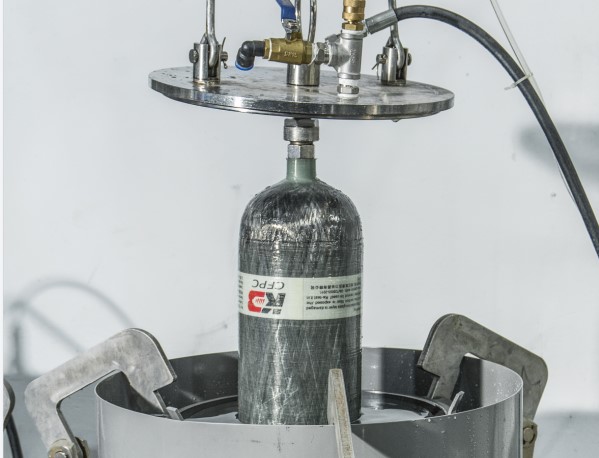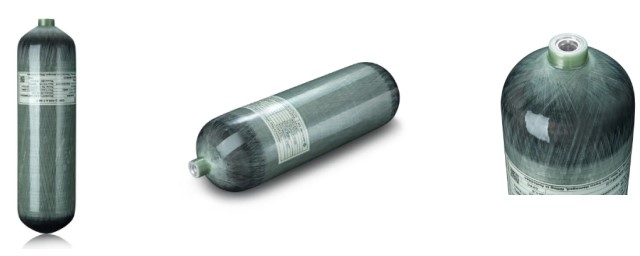For firefighters charging into burning buildings and rescue teams venturing into collapsed structures, reliable equipment is the difference between life and death. When it comes to Self-Contained Breathing Apparatus (SCBA), where compressed air is a lifeline, the integrity of the cylinder is paramount. Here’s where carbon fiber composite cylinders come in, offering a lighter and potentially safer alternative to traditional steel cylinders. However, ensuring their quality hinges on a crucial process – airtightness inspection.
Why Carbon Fiber?
Traditional steel SCBA cylinders, while robust, can be cumbersome due to their weight. Carbon fiber composite cylinders offer a significant advantage: a drastic reduction in weight. This translates to better mobility and endurance for users during critical operations. Additionally, some composite cylinders boast features like flame-resistant materials and improved impact resistance, adding another layer of safety.
The Silent Threat: Leaks and Defects
Despite the benefits, carbon fiber composite cylinders are not without their challenges. Unlike steel, which is a solid material, carbon fiber is a composite material – a combination of carbon fibers and a resin matrix. While this allows for a lighter design, it introduces the potential for imperfections during the manufacturing process. These imperfections, often microscopic, can lead to leaks, compromising the integrity of the cylinder and potentially endangering the user’s life.
Airtightness Inspection: The Watchdog
This is where airtightness inspection comes into play. It acts as the silent watchdog, ensuring that the manufactured carbon fiber composite cylinder is truly airtight and meets the stringent safety standards required for SCBA use. There are several methods employed for airtightness inspection, each with its own advantages:
-Hydrostatic Testing: This is a well-established method where the cylinder is completely submerged in water and pressurized to a level exceeding its normal operating pressure. Any leaks will be readily detected by water bubbles escaping from the cylinder.
-Acoustic Emission Testing: This method utilizes sophisticated equipment to detect sound waves emitted by the cylinder when pressurized. Leaks or defects will cause a distinct acoustic signature, allowing for pinpointing the location of the issue.
-Ultrasonic Testing: This non-destructive method uses high-frequency sound waves to penetrate the cylinder wall and identify any internal defects or inconsistencies that might compromise airtightness.
-Helium Leak Detection: This technique utilizes the small size of helium atoms to their advantage. The cylinder is filled with helium gas, and a highly sensitive detector scans the exterior surface. Any leaks will allow helium to escape, triggering an alarm and pinpointing the leak location.
The Importance of Consistent Inspection
Airtightness inspection is not a one-time event. It should be conducted throughout the manufacturing process, starting from raw material inspection to ensure the quality of the fibers and resin. Post-production inspections are equally crucial to guarantee the final product meets safety standards. Additionally, periodic inspections are necessary throughout the lifespan of the cylinder to identify any potential leaks that may develop over time due to wear and tear.
Beyond Detection: Maintaining Quality
Airtightness inspection plays a vital role beyond simply detecting leaks. The data gathered from these inspections helps manufacturers continuously improve their production processes by identifying areas where imperfections might be occurring. This feedback loop allows for refining manufacturing techniques, leading to a higher overall quality of carbon fiber composite cylinders.
Investing in Safety: A Shared Responsibility
Manufacturers have a primary responsibility to ensure the airtightness and safety of carbon fiber composite cylinders. However, other stakeholders also play a crucial role. Regulatory bodies need to establish and enforce clear standards for airtightness inspection and cylinder performance. Fire departments and rescue teams utilizing these cylinders need to implement proper maintenance procedures that include regular inspections for airtightness.
The Future of Airtightness Inspection
As technology advances, airtightness inspection methods can also evolve. New and more sensitive detection techniques can be developed, further enhancing the ability to identify even the most minute leaks. Additionally, automation can play a larger role in streamlining the inspection process, ensuring consistency and efficiency.
Conclusion: A Breath of Assurance
In the high-stakes world of emergency response, reliable equipment is a necessity. Carbon fiber composite cylinders offer numerous advantages for SCBA use, but their safety hinges on their airtightness. Rigorous airtightness inspections throughout the entire lifecycle of the cylinder, from manufacturing to use and maintenance, serve as the silent guardian, ensuring that these cylinders live up to their promise and provide a breath of assurance to those who rely on them the most. By investing in continuous improvement of airtightness inspection techniques, manufacturers, regulatory bodies, and users can work together to ensure that carbon fiber composite cylinders remain a reliable and safe choice for SCBA applications.
Post time: Jul-03-2024


